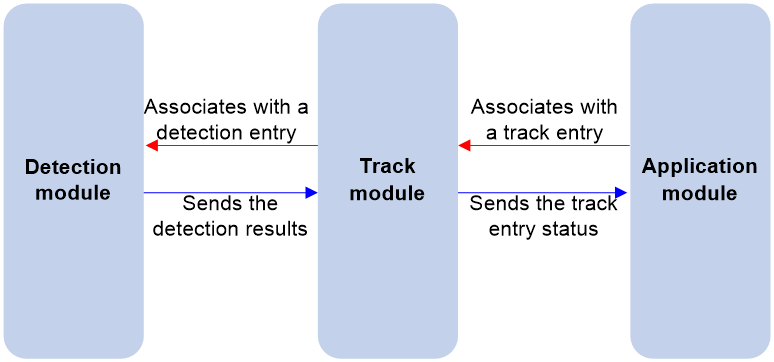- Table of Contents
-
- 07-System
- 01-Track
- 02-BFD
- 03-NQA
- 04-Basic log settings
- 05-Email server
- 06-Session log settings
- 07-Sandbox log settings
- 08-Threat log settings
- 09-Application audit log settings
- 10-NetShare log settings
- 11-URL filtering log settings
- 12-Attack defense log settings
- 13-Reputation log settings
- 14-Bandwidth alarm logs
- 15-Configuration log settings
- 16-Security policy log
- 17-Terminal identification logging
- 18-Heartbeat log settings
- 19-WAF log settings
- 20-Bandwidth management logs
- 21-Report settings
- 22-Session settings
- 23-Signature upgrade
- 24-Software upgrade
- 25-License management
- 26-Administrators
- 27-Date and time
- 28-SNMP
- 29-Configuration management
- 30-Reboot
- 31-About
- 32-Ping
- 33-Tracert
- 34-Packet capture
- 35-Webpage Diagnosis
- 36-Diagnostic Info
- 37-Packet trace
- 38-Fast Internet Access
- Related Documents
-
| Title | Size | Download |
|---|---|---|
| 01-Track | 36.82 KB |
Track
This help contains the following topics:
¡ Collaboration between the Track module and a detection module
¡ Collaboration between the Track module and an application module
Introduction
The Track module works between application modules and detection modules. It shields the differences between various detection modules from application modules.
Collaboration mechanism
The Track module collaborates with detection modules and application modules.
As shown in Figure 1, collaboration is enabled when you associate the Track module with a detection module and an application module, and it operates as follows:
1. The detection module probes specific objects such as interface status, link status, network reachability, and network performance, and informs the Track module of detection results.
2. The Track module sends the detection results to the application module.
3. When notified of changes for the tracked object, the application modules can react to avoid communication interruption and network performance degradation.
Figure 1 Collaboration through the Track module
Collaboration between the Track module and a detection module
The detection module sends the detection result of the tracked object to the Track module. The Track module changes the status of the track entry as follows:
· If the tracked object operates correctly, the state of the track entry is Positive. For example, the track entry state is Positive in one of the following conditions:
¡ The target interface is up.
¡ The target network is reachable.
· If the tracked object does not operate correctly, the state of the track entry is Negative. For example, the track entry state is Negative in one of the following conditions:
¡ The target interface is down.
¡ The target network is unreachable.
If the detection result is invalid, the state of the track entry is NotReady. For example, the track entry state is NotReady if its associated NQA operation does not exist.
Collaboration between the Track module and an application module
The track module reports the track entry status changes to the application module. The application module can then take correct actions to avoid communication interruption and network performance degradation
Configure Track
1. Select System > High Availability > Track.
2. Click Add.
3. Create a track entry.
Table 1 Basic Track configuration items
|
Item |
Description |
|
Track entry |
Enter the track entry ID that uniquely identifies a track entry. |
|
Detection module |
Select a detection module to be associated with Track. |
|
Positive notification delay |
Specifies the delay for notifying the application module that the track entry state has changed to Positive. If the Track module immediately notifies the application module of a track entry state change but the route convergence is not complete, a communication failure might occur. In such cases, you can set a notification delay to avoid immediate notification of track entry state changes. The notification delay settings do not take effect if the track entry is not associated with an application module. |
|
Negative notification delay |
Specifies the delay for notifying the application module that the track entry state has changed to Negative. If the Track module immediately notifies the application module of a track entry state change but the route convergence is not complete, a communication failure might occur. In such cases, you can set a notification delay to avoid immediate notification of track entry state changes. The notification delay settings do not take effect if the track entry is not associated with an application module. |
Table 2 Track-BFD association configuration items
|
Item |
Description |
|
BFD packet output interface |
Select an interface to send BFD echo packets. Track can be associated with only echo-mode BFD sessions. |
|
Local IP |
Enter the local IP address of the BFD session. |
|
Remote IP |
Enter the remote IP address of the BFD session. |
Table 3 Track-NQA association configuration items
|
Item |
Description |
|
NQA operation administrator |
Enter the name of the NQA operation administrator who creates the NQA operation. |
|
Operation tag |
Enter the NQA operation tag. |
|
Sequence number |
Enter the ID of the reaction entry to be associated with the track entry. |
Table 4 Track-interface association configuration items
|
Item |
Description |
|
Monitored interface |
Select an interface to be associated with Track. |
|
Monitored interface attribute |
Select an interface attribute, which can be physical state, data link layer state, IPv4, or IPv6. |
Table 5 Track-route association configuration items
|
Item |
Description |
|
VPN instance |
Select the VPN instance for the route to be associated with Track. |
|
IP |
Enter the IP address of the route entry, in dotted decimal notation. |
|
Mask length |
Enter the mask length of the IP address. |


